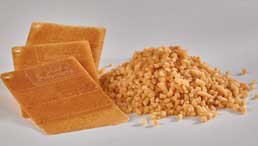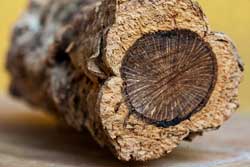TPEs: biomaterials from FKuR Polymers and Hexpol;

With the biomaterials market on a growth trajectory, thermoplastic elastomer (TPE) specialists are also jumping the bandwagon to offer non-petroleum-based compounds, with higher biocontent and hardness levels.
German compounding specialist FKuR Polymers has introduced TPE grades for injection moulding and extrusion applications, based on SEBS and SBS, as well as bio-based TPEs with what it says “have a high to a very high proportion of renewable raw materials”.
Christian Dohmen, Managing Director, states: "TPE have been the focus of FKuR Polymers since its founding in 2015. Now we can offer these strategic products to the market. For example, with our SBS and SEBS based Macoprene S product types, we cover the hardness range from Shore A20 to Shore D40. TPE types based on SEEPS will follow." Meanwhile, at K2016 it showcased its Terraprene bio grades from the higher hardness classes, in which it has substituted up to 90% of the petroleum-based raw materials by renewable resources. The company says that at present, it is working to offer softer grades.
It also says that the interest in bio-TPE is “enormous”. “We have returned from the exhibition with a large number of specific inquiries that confirm the direction of our development activities and have generated further new ideas,” says Dohmen.
FKuR Polymers produces its TPE portfolio at the compounding plants of FKuR Kunststoff.
Hexpol launches “green” TPE

In related news, Swedish firm Hexpol TPE, has added new compounds to its Dryflex Green family of biobased TPEs, based on raw materials from renewable resources such as plant and vegetable crops. Raw materials can be produced from various renewable sources, these include products and by-products from agricultural that are rich in carbohydrates, especially saccharides such as grain, sugar beet and sugar cane.
Hexpol also says it has developed several new customisation options for the Dryflex TPE compounds. The hardness range has been expanded to include 20 Shore A to 50 Shore D, with amounts of renewable biocontent to over 90% (ASTM D 6866-12), depending on the hardness.
Thomas Köppl, Manager Central Technology and Development Centre at Hexpol commented, “One of the key challenges we faced with the Dryflex Green TPE compounds was to develop low hardnesses with high levels of renewable content, since most biobased raw materials in the market are quite hard on their own. We have now added lower hardnesses to the Dryflex Green range while at the same time maintaining mechanical properties.”
The biobased content in the Dryflex Green compounds can derive from various raw materials such as polymers, fillers, plasticisers or additives. For applications wanting a look even closer to nature, Hexpol has additionally developed compounds using organic fillers and natural fibres from plants, crops or trees, including cork, which comes from the bark of the cork oak tree. The removal of the bark does not harm the trees and the bark is only harvested after the first 20 years of growth, says Hexpol. The removal stimulates a steady regeneration of the bark. Each cork tree provides on average 16 harvests over its 150-200 year lifespan.
The company says the use of cork and natural fibres helps to give an additional ‘organic’ appearance.
Dryflex Green TPE compounds can be processed using standard thermoplastic processing methods, including injection moulding and extrusion. Typical applications include; soft-touch grips and handles, tools and hardware, sports equipment and packaging.
(PRA)Copyright (c) 2016 www.plasticsandrubberasia.com. All rights reserved.










































